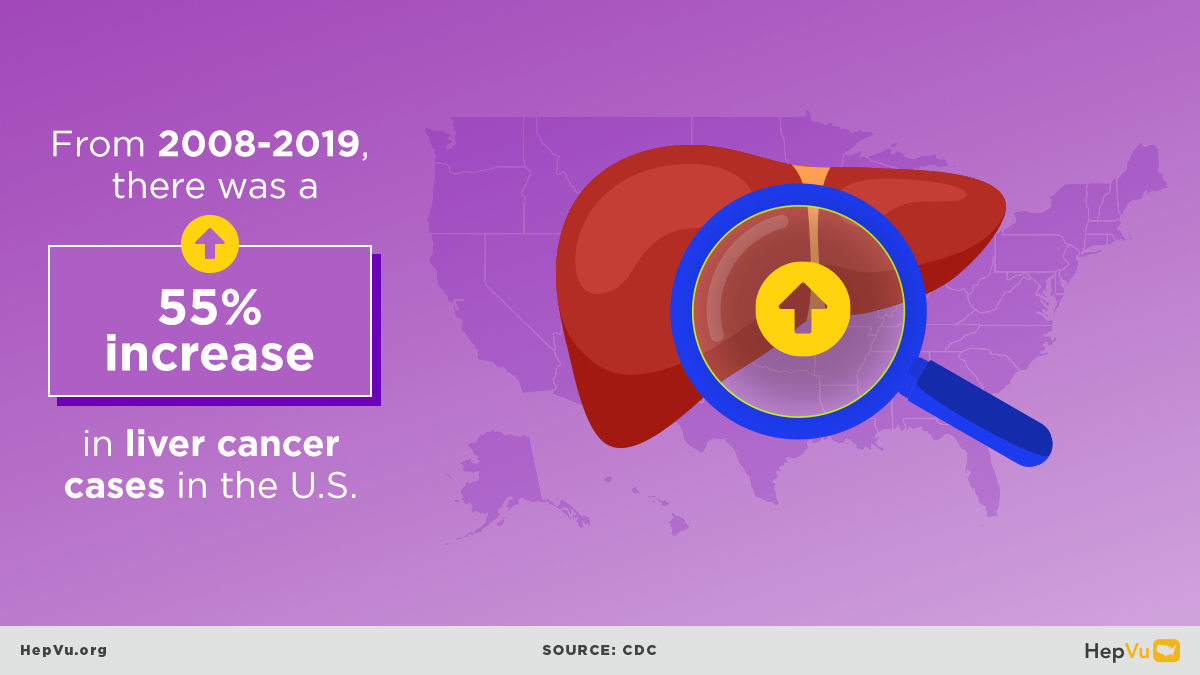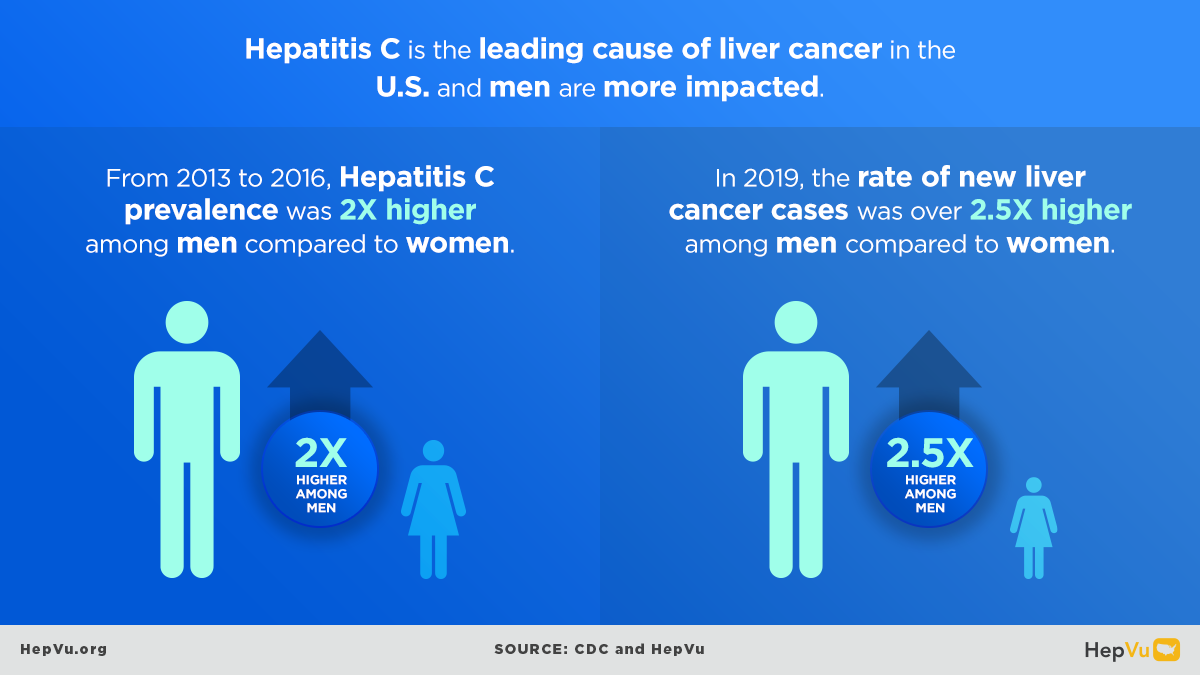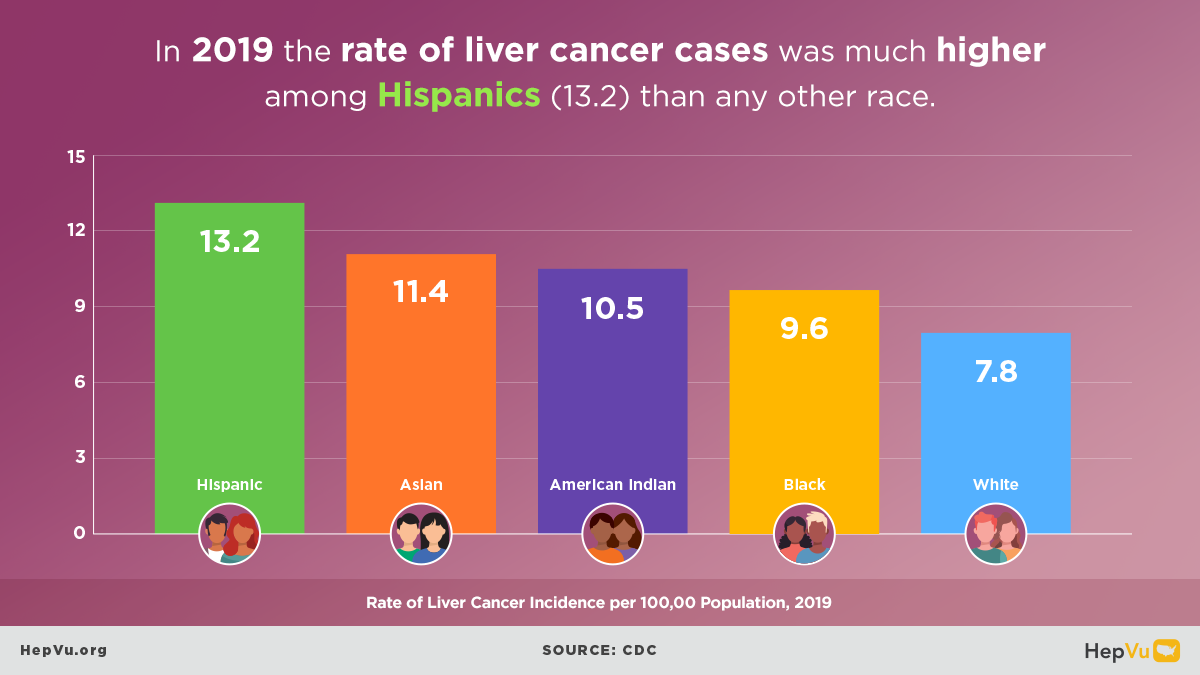
October is Liver Cancer Awareness month, and HepVu is raising awareness, empowering and educating those impacted by liver cancer, and increasing public understanding of the link between liver cancer and viral hepatitis.
There are several causes of liver cancer but long-term, untreated infection with Hepatitis B and Hepatitis C are the leading causes globally. Increased screening, vaccination, and treatment for Hepatitis B and C infections can prevent additional future complications for patients.
Untreated viral hepatitis infections can lead to cirrhosis, in which liver cells are damaged and replaced by scar tissue, putting individuals at increased risk for liver cancer. Other factors that can lead to liver cancer include heavy alcohol use, tobacco use, obesity, and type 2 diabetes.
Further disparities in liver cancer cases exist among different populations, by race, and by region. From 2008 to 2019, the rates of new liver cancer cases increased across the country. The state that saw the highest increase was North Dakota, at 148%. Only three states – Wyoming, Hawaii, and Vermont – saw a decrease in rates. In 2019, the rates of liver cancer cases per 100,000 population were higher among racial/ethnic minority populations than White individuals (7.8), such as those for Asian (11.4), Black (9.6), American Indian (10.5), with the highest rates among the Hispanic/Latinx (13.2) population.
To learn more about how liver cancer and viral hepatitis affect communities nationwide, explore HepVu’s resources below:
- Visualize Hepatitis C prevalence and mortality with data stratifications on HepVu’s interactive map.
- Read expert-led blogs to deepen your understanding of viral hepatitis and liver cancer.
- Mark Sulkowski on Relationship Between Viral Hepatitis & Liver Cancers
- Samuel So on Liver Cancer & Hepatitis B and C
- HepVu Q&A: Dr. Lauren Beste on Hepatitis C, Liver Cancer, and Veterans’ Health
- North Carolina CHAMP Program: Engaging and Supporting Physicians and Patients in Curing Hepatitis C
- Hepatitis B: Overcoming Multiple Challenges to Eliminate the Disease








